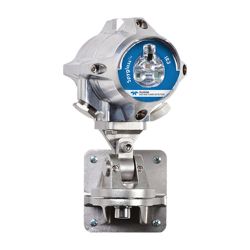Optical flame detectors
An optical flame detector, more commonly known as a flame detector, reacts to radiation emitted by all types of flames. Developed to very quickly prevent a fire starting in a few tens of milliseconds, it is made up of sensors working with invisible radiation, namely ultraviolet (UV) or infrared (IR). The most efficient optical flame detectors generally have several sensors (UV / IR, UV / IR / IR, IR3 and IR4) for better reliability and false alarm immunity with a remarkable performance level of and an average time between failures (ATBF - average time between failures) over 17 years!
Optical flame detectors are particularly suitable for high-risk industrial applications, in particular refineries, oil storage, offshore platforms, printing plants, but also all ATEX classified areas (explosive atmospheres). These fire prevention devices are particularly suitable for hydrocarbon fires (gasoline, diesel, kerosene), methane, LPG, hydrogen, polypropylene but also paper, hence its use in printing facilities. For most fires, we recommend the IR4 technology (the most efficient) or IR3 (a little less expensive for very similar performances). For hydrogen fires, we recommend the UV / IR technology (combination of an ultraviolet sensor and an infrared sensor).



